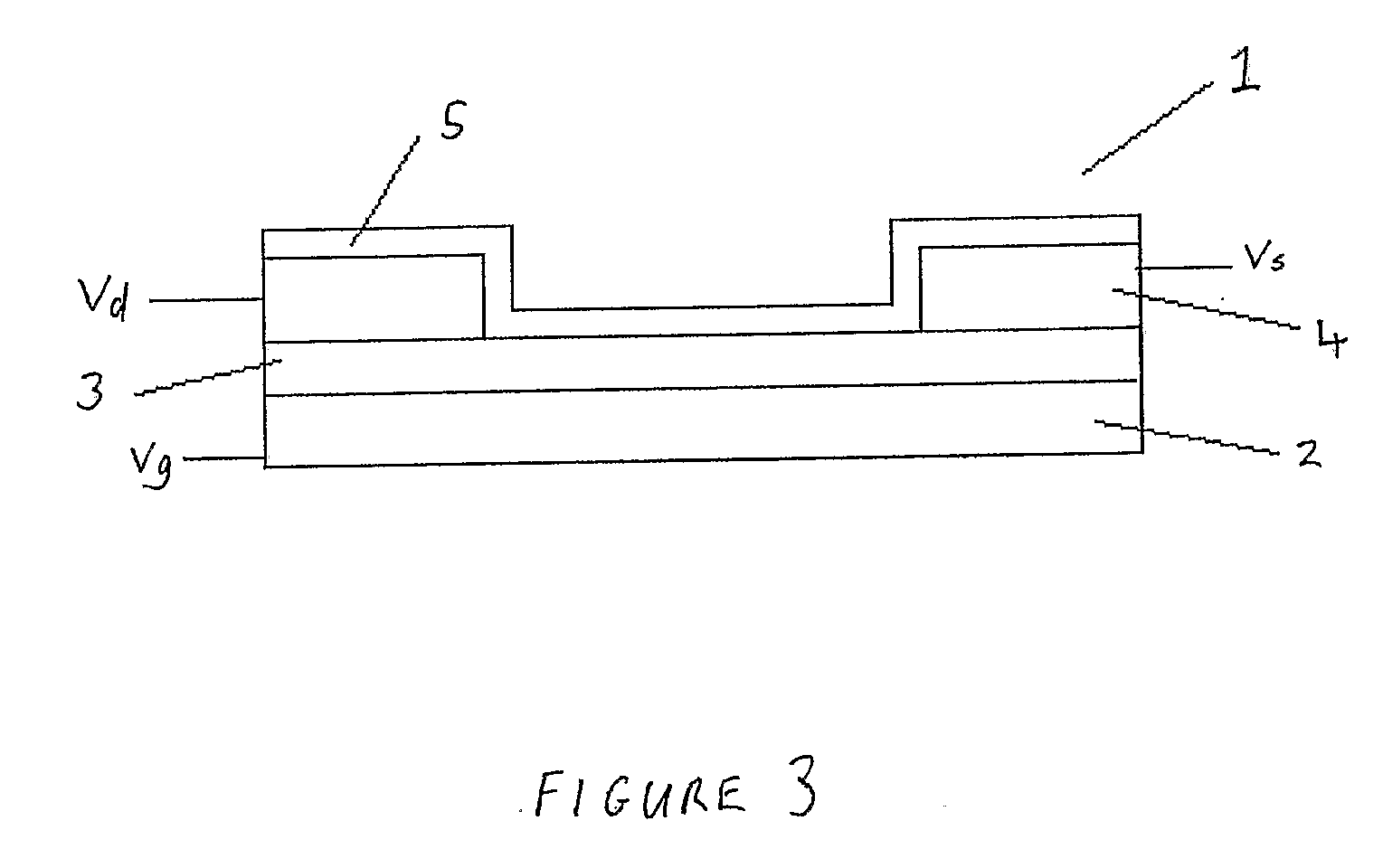Functionalised graphene oxide
- Summary
- Abstract
- Description
- Claims
- Application Information
AI Technical Summary
Benefits of technology
Problems solved by technology
Method used
Image
Examples
example 1
[0068]The following preparation of graphene oxide is based on the Staudenmaier method. A conical flask equipped with a magnetic stir bar was charged with concentrated sulfuric acid (95-97%, 17.5 mL) and fuming nitric acid (90%, 9 mL), and cooled to 0-5° C. by immersion in an ice bath. Graphite powder (−325 mesh, >99.99%, Sigma-Aldrich, 1.0 g) was then added slowly with vigorous stirring. After the graphite powder was well dispersed into a black slurry, potassium chlorate (>99.0%, 11 g) was added slowly over 15 min and after 1 h, the mixture was allowed to warm to room temperature and stirred for 7 days. The mixture was poured into 1 L of Millipore water and filtered through a 0.2 μm PTFE membrane. The material was then re-dispersed and washed in 50 mL of 5% HCl (diluted from 33-36% HCl) followed by water until the pH of the filtrate was neutral according to pH indicator paper. The resultant dull grey GO material was then dried in a vacuum desiccator over...
example 1a
[0070]The same procedure was used as in Example 1, but periodic acid (>99%, 8 g) was used in place of potassium chlorate.
example 2
Functionalisation of Graphene Oxide
[0071]A mixture of 10 mg of GO, 100 mg of octadecylamine (ODA, 97% purity, Sigma-Aldrich) and 60 μL 1,3-diisopropylcarbodiimide (DIC, 99% purity, Sigma-Aldrich) was mixed with 5 mL of dichlorobenzene (99.8% purity, Romil) in a borosilicate glass reaction vial, purged with N2 and heated with intermittent sonication to 80° C. for 24 h under N2 to give a homogeneous black dispersion. A repeated dispersion and centrifugation with tetrahydrofuran, ethanol followed by toluene was performed to obtain / extract the functionalised graphite oxide (ODA-GO).
PUM
| Property | Measurement | Unit |
|---|---|---|
| Angle | aaaaa | aaaaa |
| Angle | aaaaa | aaaaa |
| Temperature | aaaaa | aaaaa |
Abstract
Description
Claims
Application Information
 Login to View More
Login to View More - R&D
- Intellectual Property
- Life Sciences
- Materials
- Tech Scout
- Unparalleled Data Quality
- Higher Quality Content
- 60% Fewer Hallucinations
Browse by: Latest US Patents, China's latest patents, Technical Efficacy Thesaurus, Application Domain, Technology Topic, Popular Technical Reports.
© 2025 PatSnap. All rights reserved.Legal|Privacy policy|Modern Slavery Act Transparency Statement|Sitemap|About US| Contact US: help@patsnap.com



